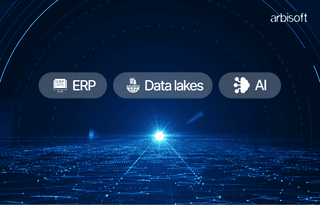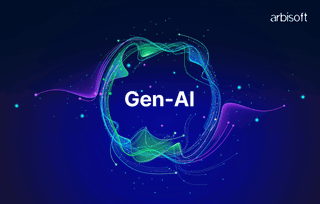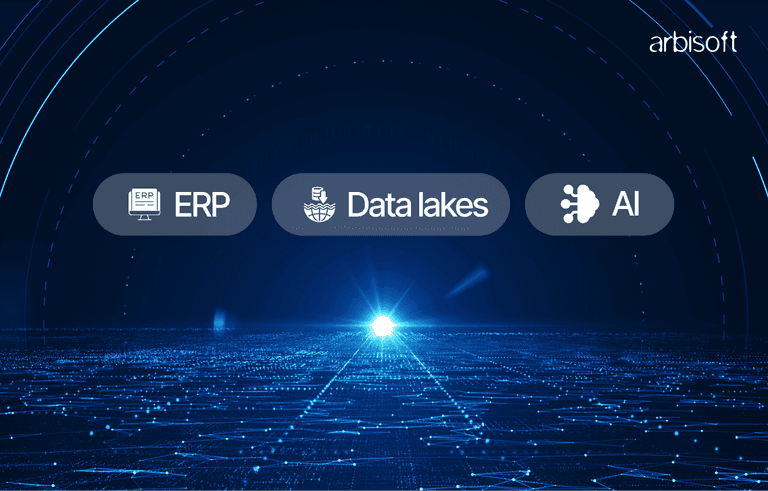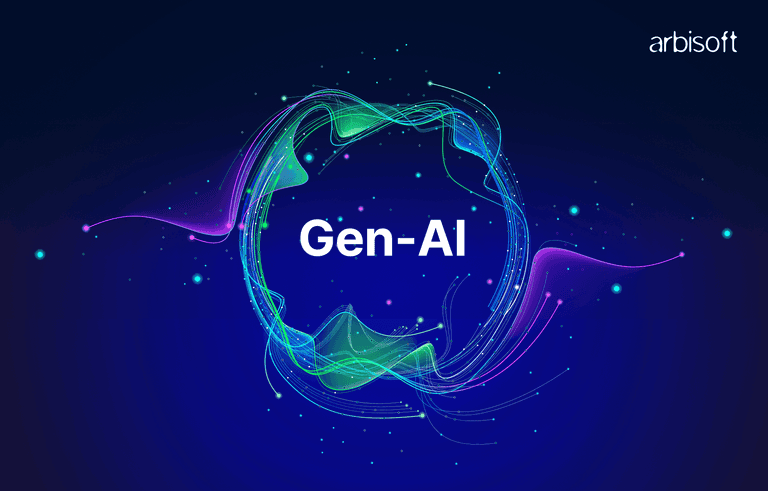We put excellence, value and quality above all - and it shows




A Technology Partnership That Goes Beyond Code

“Arbisoft has been my most trusted technology partner for now over 15 years. Arbisoft has very unique methods of recruiting and training, and the results demonstrate that. They have great teams, great positive attitudes and great communication.”
The Merging of EdTech and the Metaverse: Creating immersive learning experiences

A recent Gallup survey found that nearly half of US students are bored in school EVERY DAY! This hits high schoolers especially hard, and guess what? Experts say it's killing their ability to learn.
Why? Because the old-school lecture method doesn't work anymore. It's a one-size-fits-all approach that forgets everyone learns differently. This boredom translates to a lack of motivation and, ultimately, disengagement.
The exciting part is - EdTech has joined forces with the Metaverse, creating mind-blowing learning experiences that were once pure science fiction.
Think about it - exploring ancient ruins with a VR headset, getting instant feedback from an AI tutor – this isn't some futuristic dream, it's happening right now! Technologies like VR, AR, and AI are merging with the Metaverse to completely transform how we learn, teach, and, most importantly, get excited about education.
This blog is all about diving into this exciting fusion. We'll explore how it can be used across different subjects and the mind-blowing possibilities it holds. So get ready to learn about the future of learning here!
A. The Metaverse: Beyond the Screen
Think back to the limitations of early online learning environments - static text and clunky interfaces. The Metaverse isn't just another one of those. It's a persistent 3D virtual world where education comes alive. Here, students can engage with educational content in a way that feels real and interactive.
Here's what sets the Metaverse apart from traditional online learning.
- Immersion: Unlike watching a video lecture, the Metaverse allows students to feel like they're physically present in the learning environment.
- Interactivity: Students can interact with virtual objects, conduct experiments, and participate in simulations, fostering a deeper understanding of the material.
- Social Connection: The Metaverse allows for real-time collaboration and communication with classmates and instructors, creating a more engaging learning experience.
B. Reimagining Education: Learning Gets Real in the Metaverse
Current EdTech tools, while valuable, often struggle to capture the full spectrum of human learning. The Metaverse has the potential to revolutionize education by addressing these limitations:
1. Bringing Abstract Concepts to Life
Instead of a textbook diagram, students in a Metaverse history class could explore a virtual recreation of the Colosseum in ancient Rome. This allows them to interact with the structure and gain a deeper understanding of its design and purpose.
2. Personalized Learning Paths
Think about a language learning platform in the Metaverse that adapts to a student's progress. Students could practice conversations with virtual tutors tailored to their individual learning styles and pace.
3. Accessibility Revolution
Platforms like Google Expeditions already leverage virtual reality to bring educational experiences to classrooms around the world. The Metaverse can expand on this by allowing students from anywhere to participate in immersive learning experiences together, regardless of location.
4. Engaging All Learners
A pilot program at Stanford University used virtual reality to create a more engaging learning environment for students with dyslexia. The Metaverse can build on these successes by offering a variety of interactive and gamified learning experiences that cater to different learning styles.
Stepping into the Metaverse Classroom: Practical Applications
The Metaverse isn't just about flashy possibilities; it has the potential to revolutionize how we learn across various subjects and learning styles. Here's a glimpse into how the Metaverse can transform education.
a. History
Instead of relying solely on textbooks, history classes can utilize the Metaverse like the "Colosseum Rome VR" experience. Students can virtually explore the Colosseum, witnessing its grandeur and gladiatorial arena, and gaining a deeper understanding of Roman entertainment and architecture.
b. Science
Platforms like "Labster" offer VR simulations for science experiments. Students in a chemistry class can design and conduct virtual experiments, like dissecting a frog or witnessing a chemical reaction, all within a safe, simulated Metaverse lab.
c. Language Learning
Platforms like "Mondly" create virtual environments like cafes where students converse with AI tutors in their target language. This immersive practice improves speaking skills and familiarity with everyday language use.
d. Project Work Without Borders
For instance, consider a climate change study where a team in Australia researches the Great Barrier Reef virtually while another in Brazil studies the Amazon rainforest. The Metaverse platform "Virtbela" allows students from different schools across the globe to collaborate on projects in real-time.
e. Virtual Guest Speakers
Metaverse classrooms can host live presentations from experts anywhere. For instance, a marine biology class can attend a lecture by a researcher stationed on a real coral reef research station, broadcast directly into their virtual classroom.
f. Global Exchange Programs Reimagined
Cultural exchange programs go virtual. Metaverse classrooms can connect students with peers from other countries, allowing them to learn about different cultures and perspectives firsthand. Platforms like "PenPal Schools" facilitate these virtual exchanges.
g. Adaptive Learning
Metaverse learning platforms can personalize the experience. There are platforms that track student progress and adjust content difficulty. Students who grasp a concept quickly can move on to more challenging material, while those who need more time can receive personalized support from virtual tutors, like the "DreamBox" platform for math.
Are you an educator eager to bring the metaverse into your classroom?
Here's your chance to get started on the right foot! This free guide unveils the 8 most common mistakes when integrating EdTech and the Metaverse.

Here are the 8 most common mistakes made when integrating EdTech and the Metaverse
Download the free list here!

Challenges and Considerations
The Metaverse holds immense promise for education, but venturing into this new frontier comes with its own set of challenges. Let's explore some key considerations to ensure a smooth and equitable learning experience for all.
A. Accessibility and Equity: Bridging the Digital Divide
One of the biggest hurdles is ensuring everyone has a fair shot at Metaverse learning. Hardware like VR headsets and reliable internet connectivity can be expensive, potentially excluding students from low-income backgrounds. This could exacerbate existing educational inequalities.
Proposed Solutions
- Subsidized Hardware Programs
Initiatives like government subsidies or school-funded programs can help bridge the hardware gap, making VR headsets more accessible to students from underprivileged backgrounds.
- Scalable, Cloud-Based Solutions
Not everyone needs a high-end VR setup. Cloud-based platforms that require minimal hardware can be a cost-effective alternative, allowing students to participate using simpler devices like tablets or computers.
B. Data Privacy and Security
The immersive nature of the Metaverse raises concerns about data privacy and security. User data collected within the learning environment needs robust protection. Additionally, the potential for online harassment and inappropriate content requires careful consideration.
Proposed Solutions
- Transparent Data Practices
Clear and transparent data practices are crucial. Schools and Metaverse platforms need to clearly explain what data is collected, how it's used, and how student privacy is protected.
- Parental Controls and Safe Spaces
Parental controls within the Metaverse can empower parents to monitor their children's online activity. Additionally, creating designated safe spaces within the Metaverse can ensure a positive and protected learning environment for students.
C. Addressing Tech Fatigue and Social Isolation
While the Metaverse offers exciting possibilities, spending excessive time in virtual environments can lead to tech fatigue and a disconnect from the real world. Social interaction and physical activity are still essential for healthy development.
Proposed Solutions
- Time Management Strategies
Integrating time limits and breaks into Metaverse learning sessions can help combat tech fatigue and ensure students don't get overwhelmed.
- Blended Learning Approach
The Metaverse should complement, not replace, traditional classroom learning. A blended approach that incorporates both virtual and physical activities ensures a well-rounded educational experience.
A Glimpse into the Future
The EdTech Metaverse is transforming education by merging the best of physical and virtual worlds, powered by AI-driven personalization, a commitment to lifelong learning, and innovative edtech services. Here's how:
1. AI-powered Learning Companions
Think about a personal tutor who tailors lessons, provides instant feedback, and tracks progress – all powered by AI. This is exactly what AI companions like Squirrel AI and Cognii offer. They personalize learning paths, suggest relevant resources, and adjust the difficulty to maximize understanding, leveraging advanced ai and data science services to improve the learning experience continuously.
2. Seamless Blending of Physical and Virtual
The EdTech Metaverse enhances classrooms, not replaces them. Imagine VR field trips where students explore the Great Barrier Reef or interactive science labs where dissections come alive with VR overlays. AR can even transform historical landmarks, allowing students to virtually walk the streets of Pompeii during its eruption. Stanford University's Virtual Human Interaction Lab exemplifies this by using VR to simulate the effects of climate change, fostering a deeper understanding of complex issues.
3. Professional Development
Platforms like ENGAGE and AltspaceVR provide virtual courses and seminars for working professionals, allowing them to develop skills and network globally without disrupting their careers.
4. Informal Learning Adventures
The Metaverse goes beyond classrooms. Explore virtual museums with interactive exhibits, attend historical reenactments, or participate in virtual science fairs. These experiences can spark curiosity and ignite a lifelong passion for learning.
5. Democratization of Education
The EdTech Metaverse has the potential to make education accessible for all. Learning environments can be tailored to different styles and abilities, catering to everyone from young children to retirees. Whether you want to brush up on coding or explore a new language, the Metaverse can provide the resources and support you need to keep learning and growing throughout your life.
In a Nutshell
EdTech merging with the Metaverse isn't just about flashy tech, though. It's about making learning effective. Interactive lessons, virtual world exploration, and personalized education – the future is here, and it's anything but boring.
Of course, there are challenges. Not everyone has access to VR headsets, and keeping student data safe is crucial. We also need to find a balance between virtual learning and screen time. But if we address these issues, the EdTech Metaverse has the potential to revolutionize education. It's a future where learning is exciting and engaging and prepares students for anything life throws their way.
























